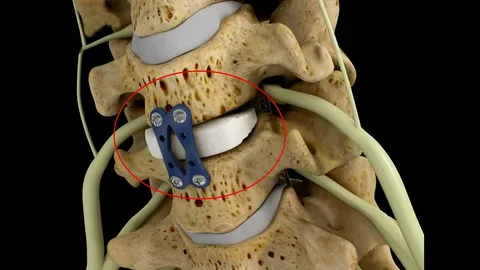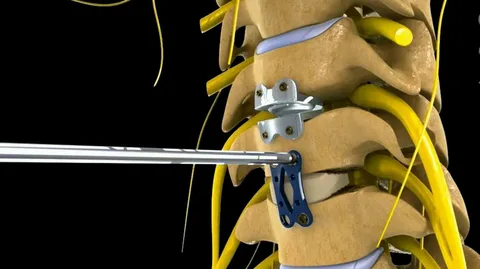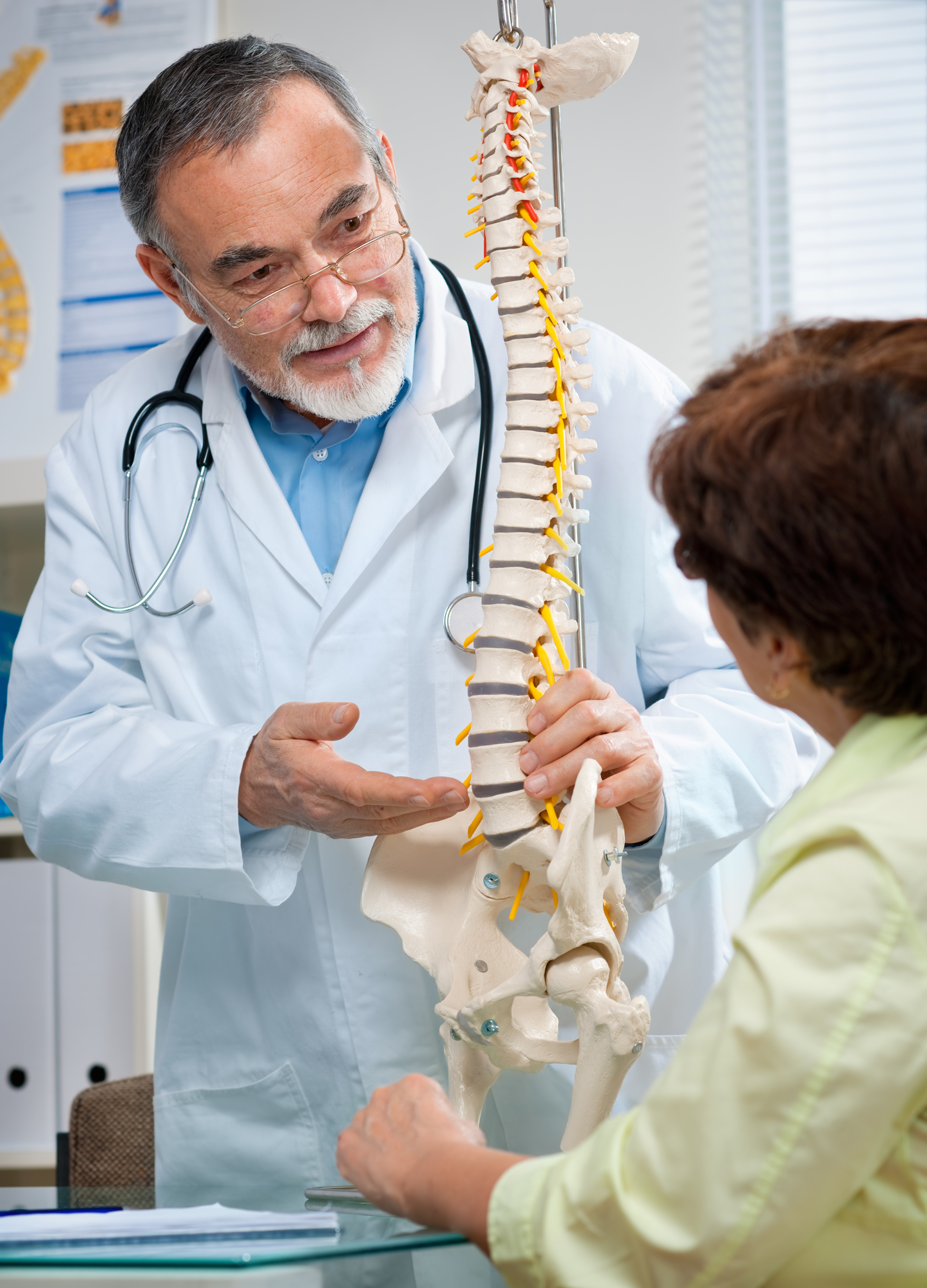Anterior Cervical Discectomy and Fusion (ACDF)
Anterior Cervical Discectomy and Fusion (ACDF) – Expert Spine Surgery in New York
If you are dealing with chronic neck pain or other related issues, you may be considering surgical options like anterior cervical discectomy and fusion (ACDF). This procedure is a reliable solution for patients suffering from herniated discs, degenerative disc disease, and other cervical spine conditions. At Tristate Spine and Sports Surgery, led by Dr. Aron Rovner, we specialize in this transformative procedure, providing expert care tailored to your unique needs.
Our goal is to relieve pain and restore function, allowing you to lead a more active life. Let’s take a closer look at ACDF surgery, including its benefits, the procedure itself, recovery details, and everything else you need to know.
Understanding Anterior Cervical Discectomy and Fusion (ACDF)

Anterior cervical discectomy and fusion is a surgical procedure designed to relieve pressure on the spinal cord or spinal nerves caused by herniated discs or other spinal conditions. This procedure involves removing the problematic disc through an incision at the front of the neck. After the disc removal, a bone graft is placed between the vertebrae to promote fusion, ensuring stability in the cervical spine.
Why Would You Need ACDF Surgery?
Patients may require this surgery for several reasons, including:
- Herniated Disc Removal: When a disc in the neck has herniated and is pressing on the spinal nerves, causing severe pain, numbness, or weakness.
- Cervical Degenerative Disc Disease: Age-related wear and tear of the discs, leading to pain and discomfort.
- Spinal Cord Compression: Conditions that narrow the spinal column, causing potential spinal cord injury.
- Neck Pain Treatment: Chronic neck pain that does not improve with non-surgical therapies.
Our team is committed to ensuring that all conservative treatments are considered before surgery, but if these methods do not alleviate your symptoms, ACDF surgery may be the best option.
The Anterior Cervical Fusion Procedure
During the ACDF surgery, Dr. Rovner will:
- Make a Small Incision: A small incision is made at the front of the neck to access the cervical spine.
- Remove the Herniated Disc: The affected disc is carefully removed to relieve pressure on the nerve roots and spinal cord.
- Insert a Bone Graft: A bone graft is placed in the disc space to facilitate fusion between the neighboring vertebrae.
- Secure with Hardware: Often, a titanium plate is fixed to the vertebrae to ensure stability during the healing process.
This cervical spine surgery is usually performed using minimally invasive techniques, helping to reduce recovery time and minimize scarring.

ACDF Recovery Time
The ACDF recovery time usually varies among individuals but generally takes about four to six weeks for initial healing. During this time, it is common to experience some discomfort, which can be managed through prescribed pain medications. Many patients report a reduction in arm and neck pain shortly after the surgery, as the pressure on nerve roots is alleviated.
What Should I Avoid Doing After ACDF Surgery?
Following your procedure, it is crucial to follow Dr. Rovner’s Post-Op Instructions to ensure a smooth recovery.
Here are some activities you should avoid:
- Bending or Twisting: Try to minimize twisting or bending your neck for at least six weeks post-surgery.
- Lifting Heavy Objects: Avoid lifting anything heavier than five to ten pounds until cleared by your doctor.
- Driving: Refrain from driving until you are no longer taking pain medication and feel confident in your ability to react quickly.
Common Complications of ACDF Surgery
As with any surgical procedure, common complications can occur, though they are relatively rare.
Some potential risks include:
- Infection at the surgical site.
- Nerve injury or damage to surrounding structures.
- Difficulty swallowing (temporarily).
- Problems with spinal fusion.
What is the Success Rate of Anterior Cervical Discectomy and Fusion?
The success rate of anterior cervical discectomy and fusion is impressive, with studies showing around 85-90% of patients experience significant pain relief and improved function. Many patients return to normal activities within a few months.
Disadvantages of Anterior Cervical Discectomy and Fusion
While ACDF is a highly effective procedure, it is essential to understand the potential disadvantages like:
- Potential for adjacent segment disease, where other discs may deteriorate faster after ACDF.
- Scar tissue formation may cause nerve irritation.
As with any medical decision, it’s crucial to weigh the benefits against these potential risks with your surgeon.
Cost of Anterior Cervical Discectomy and Fusion
The cost of anterior cervical discectomy and fusion can vary based on several factors, such as:
- Hospital location
- Surgeon’s fees
- Anesthesia costs
- Surgical facility fees
Insurance often covers ACDF surgery, but it’s best to consult your provider beforehand to understand your specific coverage.
Contact Us and Get the Best ACDF Treatment Today!
At Tristate Spine and Sports Surgery, Dr. Aron Rovner offers unparalleled expertise in anterior cervical discectomy and fusion (ACDF) procedures. We prioritize patient care, focusing on the least invasive techniques to promote rapid recovery and lasting results. If you are struggling with neck pain or related issues, we invite you to schedule a consultation. Together, we can discuss your medical history, evaluate your symptoms, and determine the best course of action for your spine health.

FAQs
What is anterior cervical discectomy and fusion (ACDF)?
Anterior cervical discectomy and fusion (ACDF) is a surgical procedure aimed at relieving pain and pressure caused by herniated discs in the cervical spine. During the procedure, the damaged disc is removed from the front of the neck, and a bone graft is inserted to fuse the adjacent vertebrae for improved stability.
What can I expect after anterior cervical discectomy and fusion surgery?
After ACDF surgery, many patients experience some initial discomfort, including swelling and soreness around the incision site. It is common to have temporary difficulty swallowing due to swelling in the neck area, but these symptoms usually subside within a few days as you begin to heal.
How long is recovery from anterior cervical discectomy and fusion?
The typical recovery period after ACDF surgery is around four to six weeks, during which patients can expect to gradually return to everyday activities. However, full recovery may take several months, and it’s important to follow your surgeon’s guidelines to ensure a successful healing process.
How painful is anterior cervical discectomy and fusion?
The level of pain after ACDF surgery varies by individual, but most patients report manageable discomfort that can be controlled with prescribed pain medications. The pain is expected to improve significantly within the first week as healing progresses, although mild soreness may continue for a short time.
What is the difference between a spinal fusion and a discectomy?
A spinal fusion is a surgical procedure that permanently connects two or more vertebrae to provide stability and prevent painful movement. In contrast, a discectomy focuses solely on removing a damaged or herniated disc, which can relieve nerve compression but may not involve fusing the vertebrae afterward.
What are the risks associated with ACDF surgery?
As with any surgical procedure, ACDF comes with potential risks, including infection, excessive bleeding, nerve injury, and complications from anesthesia. While these risks are relatively rare, it is crucial to discuss them thoroughly with your surgeon to weigh your specific situation against the benefits of the surgery.
Is ACDF the only option for treating cervical disc issues?
No, ACDF is one of several treatment options for cervical disc problems. Other alternatives may include physical therapy, medications to manage pain and inflammation, and cervical disc replacement surgery. A thorough evaluation by a spine specialist can help determine the best approach for your condition.
If you need further assistance or would like to schedule a consultation, please contact us at Tristate Spine and Sports Surgery. Your path to a pain-free life starts here!
Other Services
Book Your Appointment Today
Why Choose Us?
With years of expertise in spine and sports surgery, Dr. Rovner and our team provide personalized, patient-centered care.
Facilisis penatibus sapien sed dapibus sodales letius vitae tempor pretium phasellus habitant etiam augue mauris
Our offices are equipped with the latest technology to ensure accurate diagnoses and effective treatment plans.
Facilisis penatibus sapien sed dapibus sodales letius vitae tempor pretium phasellus habitant etiam augue mauris
Facilisis penatibus sapien sed dapibus sodales letius vitae tempor pretium phasellus habitant etiam augue mauris
Facilisis penatibus sapien sed dapibus sodales letius vitae tempor pretium phasellus habitant etiam augue mauris

